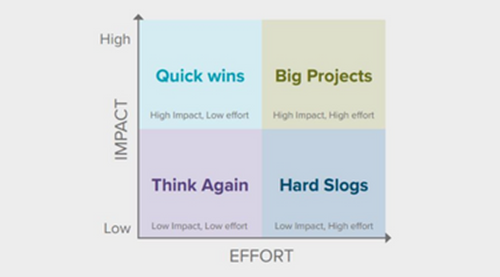Action Priority Matrix
Action Priority Matrix
The Action Priority Matrix practical steps to gender diveristy in the workforce

Action Priority Matrix
- Use gender-neutral language in job adverts including job titles, job descriptions, skills profiles and person specifications. Utilise recruitment processes and seek to avoid word of mouth recruitment, which is generally less inclusive.
- Utilise diverse interview panels and anonymous application processes. These promote inclusive recruitment by minimising bias at key parts of recruitment processes.
- Women are less likely to apply for roles where they do not meet ALL the criteria. Eliminating extra requirements that are not absolutely necessary can increase the number and diversity of applications.
- Reach out to and use the resources of relevant industry bodies, trade unions and specialist organisations that help promote gender diversity and attract underrepresented groups.
- Offer information sessions prior to recruitment, specifically targeted at underrepresented groups and genders. These can be offered in house and advertised via social media, local employability partners and education providers.
- Offer work tasters or work experience, outside of more strategic engagement projects, to underrepresented groups and genders. (While this can be useful, more strategic engagement projects are likely to be more impactful over time.)
- Develop diverse case studies and marketing materials that show the experience of apprentices and staff from underrepresented groups. Consider how the industry you represent is portrayed, are there other aspects of the work that could be highlighted that would make the industry more attractive to individuals from other
genders? - Encourage the development of staff networks to provide support and mentoring which can help improve recruitment and retention of underrepresented groups. Enable people to see themselves within your workforce and feel supported by people who are best able to understand their experiences.
- Consider detailed insight into the actual requirements of a specific job or trade, and adoption of specific tools and technologies. Discuss the pay available in different jobs, and opportunities for progression.
- Develop a proactive gender diversity strategy and action plan, including:
- Gender analysis (including baselining)
- Gender equality objectives
- Gender impact assessment
- Indicators (stretching but achievable targets)
- Ensure staff engagement and buy-in to the strategy and action plan
- Build a knowledgeable workforce, from onboarding to gender specific training, including gender knowledge and competence development.
- Adopt an outreach strategy, working with relevant partners including community groups, schools, trade unions and industry bodies to promote the business to underrepresented groups, as part of an ongoing, considered and evaluated approach. For example, working closely with a school to pipeline underrepresented groups into employment Role modelling is important. If young people can’t “see it” they struggle to “be it”. Businesses should ensure that their employees tasked with outreach in schools and other settings reflect a diverse workforce as far as is possible. Develop positive action strategies for underrepresented groups, including thinking about multiple identities like ethnic-minority women, disabled women, single parent families. This should include areas where men are underrepresented; for example mentoring programmes and paid internships
- Commit realistic and sufficient resources, time and money. Consider it as a long-term investment in the future of the organisation that will bring both intrinsic and extrinsic benefits,
and the potential to shift organisational norms. - Offer and promote flexible working, part-time working and family
The rationale for engaging with these includes situations where targeted effort might result in positive results, albeit in small numbers. For example, in reaching out to an intersectional minoritised group.
- Complex strategies, policies or partnerships with low involvement and engagement, or a focus on practical action.
- Carrying out some or parts of the actions within Big Projects but without having a strategic and structured approach. For example,
attending a range of events, offering some training but without any objective other than ‘ticking a box’. - Holding outreach events aimed at minority groups of women in rural areas.
- Generalised statements in recruitment (including promotional/information events), such as “we welcome applications from all” or “apprenticeships for all”, without practical action to make a difference.
- One-off events in schools and community settings where diverse groups are expected to attend, but there is no follow up with
attendees, or where the event is not part of a planned approach. - One-off training around equality and gender sensitivity which is not followed up with conversations or additional training.
- Job adverts with no salary, or ‘competitive salary’.
- Unsubstantiated claims of being family friendly or offering flexible working but with no relevant or visible policy in place.